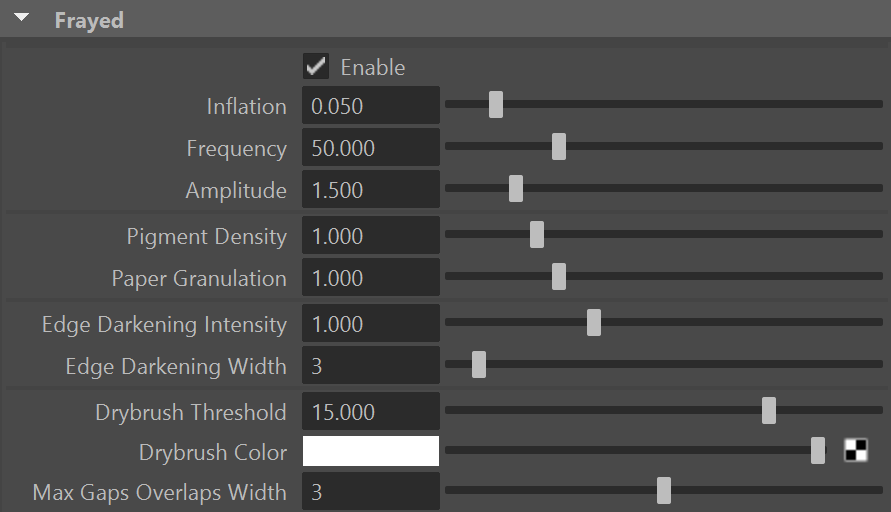The Frayed Stylization brings real-time frayed edges to 3D objects and animation within Autodesk Maya.
The Frayed edges style emulates the slightly distorted edges found when painting with traditional media. Inspired by the styles of short films like Feast and Age of Sail, the frayed edges will stick to objects under animation. It also inherits many pigment-, canvas- and edge-based effects from the watercolor stylization.
Main Features
- Frayed edges stick onto animated objects
- Control the frequency and amplitude of frayed edges
- Pigment-based effects such as pigment turbulence
- Edge-based effects such as edge darkening and gaps & overlaps
- Canvas-based effects such as paper granulation and lighting
- The stylization is also available in Nuke for Indie/Studio subscribers for frayed edges in offline renders (i.e., Arnold, Renderman)
The style can be art-directed at each level of control with MNPRX and its uber material.

Featured examples
Style attributes
To refine and customize the frayed edges style, a series of global frayed attributes are provided within the style configuration node.

Enable
Creates inflated noise instances of objects in the scene to be used for the frayed edge stylization within Maya. You can disable this attribute if you don’t want to see the noise covering all scene elements in Viewport 2.0.
Inflation
Amount of inflation of the noise objects, default: 0.05. Inflation is required to keep the frayed edges outside of the geometry.
Frequency
Frequency of the frayed edges, default: 50.0.
- Higher frequency ⇒ smaller distortions
- Lower frequency ⇒ bigger distortions Note: if the frequency is too high and the noise enters the sub-pixel size, it will flicker.
Amplitude
Determines the amount of distortion on the frayed edges, default 1.0. Note: Increasing the Amplitude will also require a higher Inflation amount.
Pigment Density
The concentration of pigments, giving the render either a diluted or a more saturated and darker look.
Paper Granulation
The accumulation of pigments on the valleys of the paper (canvas). Concentrates the pigments on the valleys and creates a more saturated and darker look.
Edge Darkening Intensity
Strength of the edge darkening effect. A higher intensity will concentrate more color on the edges.
Edge Darkening Width
Width for the edge darkening effect. Note: A wider edge darkening will require an increase in intensity, as well.
Drybrush Threshold
Sharpness of the drybrush application.
Drybrush color
Color of the drybrush application.
Max Gaps Overlaps Width
Maximum width of the gaps & overlaps effect.
Considerations
Nurbs surfaces
Nurbs surfaces can’t save any data in vertex colors, so frayed edges won’t stick onto the objects and it won’t be possible to use PaintFX on them.
Parenting of mesh objects
Parenting of mesh objects (a mesh object paranted to another one) is not supported, as Maya won’t know what mesh to render where. Use parent constraints instead.
Inflation
- Vertex normals in objects that are not sub-divided will need to be averaged for hard-edged objects. Otherwise, each face vertex has its own normal and inflation will leave gaps between each inflated face, creating uncoherent frayed edges.
- Thin objects should have faces on both sides for the object to inflate correctly.
Warnings
...due to multiply-instanced child
Whenever you get this warning, uncheck the Enable attribute in the frayed stylization, make the edits that you previously wanted to do and re-enable the frayed stylization.
